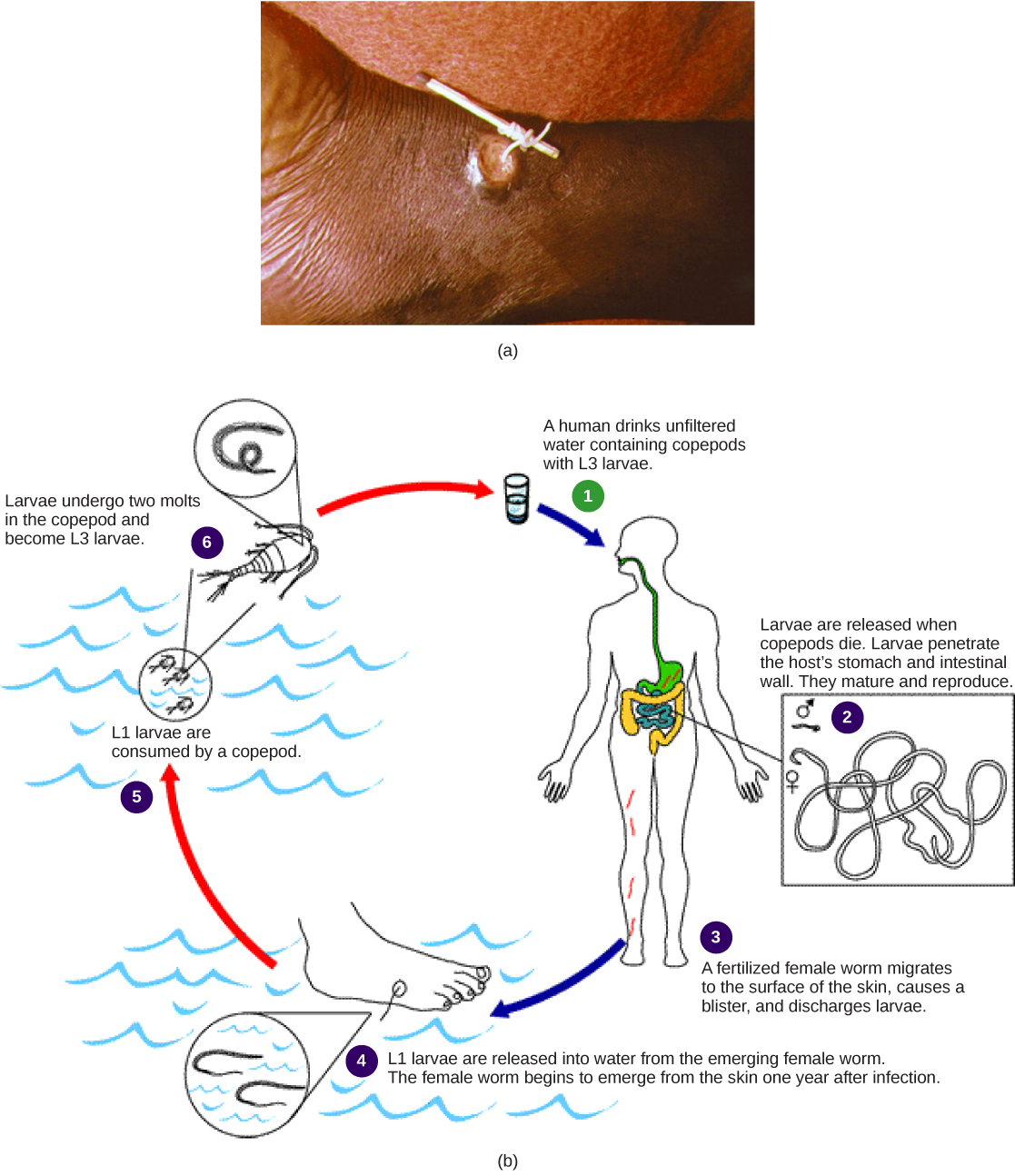| << Chapter < Page | Chapter >> Page > |
In nematodes, the excretory system is not specialized. Nitrogenous wastes are removed by diffusion. In marine nematodes, regulation of water and salt is achieved by specialized glands that remove unwanted ions while maintaining internal body fluid concentrations.
Most nematodes have four nerve cords that run along the length of the body on the top, bottom, and sides. The nerve cords fuse in a ring around the pharynx, to form a head ganglion or “brain” of the worm, as well as at the posterior end to form the tail ganglion. Beneath the epidermis lies a layer of longitudinal muscles that permits only side-to-side, wave-like undulation of the body.
Nematodes employ a diversity of sexual reproductive strategies depending on the species; they may be hermaphroditic, dioecious (separate sexes), or may reproduce asexually by parthenogenesis. Caenorhabditis elegans is nearly unique among animals in having both self-fertilizing hermaphrodites and a male sex that can mate with the hermaphrodite.
A number of common parasitic nematodes serve as prime examples of parasitism. These animals exhibit complex lifecycles that involve multiple hosts, and they can have significant medical and veterinary impacts. Humans may become infected by Dracunculus medinensis , known as guinea worms, when they drink unfiltered water containing copepods ( [link] ). Hookworms, such as Ancyclostoma and Necator , infest the intestines and feed on the blood of mammals, especially in dogs, cats, and humans. Trichina worms ( Trichinella ) are the causal organism of trichinosis in humans, often resulting from the consumption of undercooked pork; Trichinella can infect other mammalian hosts as well. Ascaris , a large intestinal roundworm, steals nutrition from its human host and may create physical blockage of the intestines. The filarial worms, such as Dirofilaria and Wuchereria , are commonly vectored by mosquitoes, which pass the infective agents among mammals through their blood-sucking activity. Dirofilaria immitis , a blood-infective parasite, is the notorious dog heartworm species. Wuchereria bancrofti infects the lymph nodes of humans, resulting in the non-lethal but deforming condition called elephantiasis, in which parts of the body become swelled to gigantic proportions due to obstruction of lymphatic drainage and inflammation of lymphatic tissues.

The name “arthropoda” means “jointed legs” (in the Greek, “arthros” means “joint” and “podos” means “leg”); it aptly describes the enormous number of invertebrates included in this phylum. Arthropoda dominate the animal kingdom with an estimated 85 percent of known species included in this phylum and many arthropods yet undocumented. The principal characteristics of all the animals in this phylum are functional segmentation of the body and presence of jointed appendages. Arthropods also show the presence of an exoskeleton made principally of chitin, which is a waterproof, tough polysaccharide. Phylum Arthropoda is the largest phylum in the animal world, and insects form the single largest class within this phylum. Arthropods are eucoelomate, protostomic organisms.

Notification Switch
Would you like to follow the 'Bi 101 for lbcc ilearn campus' conversation and receive update notifications?